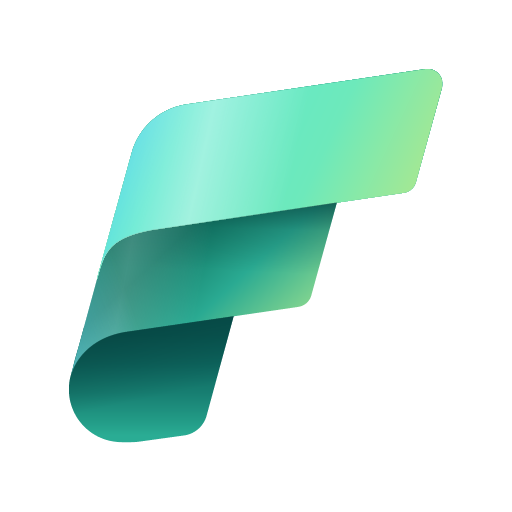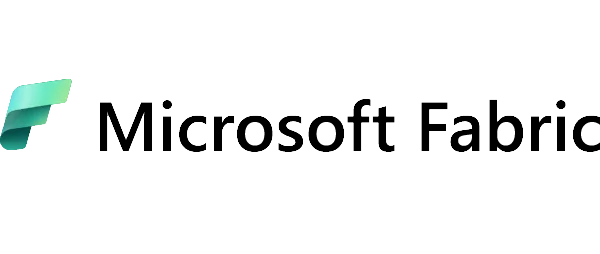Microsoft Fabric – what is it?
The dream of every analytics professional, regardless of industry, is to economise work. Speeding up processes, automation, and the right tools are crucial to success in today’s rapidly changing business world. In response to these needs, Microsoft is introducing an innovative AI-supported analytics platform, Microsoft Fabric, which is becoming a real game changer in the analytics market.
What is Microsoft Fabric?
Microsoft Fabric is a comprehensive all-in-one analytics service that enables aggregating, segmenting, and transferring data and provides real-time data science and business analytics. This innovative platform offers a wide range of services, including data lake services, data engineering, and integration, resulting in convenient and reliable data management.The key differentiating feature of Microsoft Fabric is its comprehensiveness. The analytics platform combines new and existing components from the Power BI service, Azure Synapse, and Azure Data Factory to create an integrated environment where you can use your favourite analytics tools in one place. This lets you focus on working with your data rather than wasting time combining different services from multiple providers. This intuitive and powerful solution makes data analysis more efficient than ever before.
Microsoft Fabric – what benefits does it offer?
Microsoft Fabric provides many benefits for businesses and organisations. Key among these are:
An all-in-one analytics platform for companies across industries
Primarily, various deeply integrated analytics tools can be used across multiple industries, allowing you to tailor the platform to meet the individual needs of your business. Whether in finance, marketing, logistics, or operations, Microsoft Fabric provides the tools to help you uncover valuable insights and patterns in your data.
Ease of use and data analysis
Another advantage is the ease of use of Microsoft Fabric. With its simplicity and intuitive user interface, the platform is simple to learn, regardless of your experience level. Developers, analysts, or data engineers gain easy access to all resources and can use them as required without delving into complex technical issues.
Improved Data Lake architecture
Another important aspect is the Data Lake data store, which allows you to store the data used in your preferred analytical tools. This will enable you to focus on analytics rather than wasting time searching for and combining data from different sources. This provides convenience and efficiency in data management.
Working together on data analysis
And remember the centralised management and order that Microsoft Fabric offers. This keeps all environments organised and consistent, making it easier to manage data across different levels of the organisation. Whether you are working with financial, operational or customer area data, Microsoft Fabric provides a unified view and access to data.
Microsoft Fabric is an analytics tool and a strategy transforming how companies analyse data and make inference-based decisions. With its flexibility, scalability and advanced features, Microsoft Fabric enables companies across industries to harness the full potential of their data and turn it into a competitive advantage.
What elements does the Microsoft Fabric service consist of?
Nowadays, data flow and analysis play a key role in business. Microsoft offers advanced tools that enable effective data management and processing. The Microsoft Fabric service integrates a number of handy tools to aggregate, transform, analyse and share data efficiently and in line with business requirements. Here are the main components of the MS Fabric platform:
-
Data Factory: Data Flow Automation
Data Factory is a service designed to move, transform and aggregate data from various sources to targeted locations. With Data Factory, it is possible to configure data flow pipelines that automatically perform specific tasks. Transferring data between different systems and segmenting and interpreting it becomes simpler and more efficient.
-
Data Engineering: A powerful tool for data management
Data Engineering is a tool dedicated to building models and managing large data sets. It allows the creation of large-scale data processing pipelines, which is extremely important for handling big data. With Data Engineering, data can be effectively managed and used for analysis and business decisions.
-
Data Science: Create and implement machine learning models
The Data Science service enables the rapid creation of large-scale predictive AI models and streamlines collaboration in machine learning models’ training, deployment and management. The tool makes data science more accessible to companies wanting to realise information’s full potential. With the help of Data Science, it is possible to create advanced models, experiment with existing data, and use it to predict, optimise, and automate business processes.
-
Data Warehouse: Efficient data management in the cloud
Synapse Data Warehouse is a tool that allows you to create and manage data warehouses in the cloud. It allows you to efficiently process and analyse large amounts of information, which is crucial for businesses. Access to a cloud-based data warehouse makes it easier to create reports, analyse data, and make sound business decisions for everyone working in a department or project, regardless of time or place.
-
Real-Time Analytics: real-time analytics
The Real-Time Analytics service provides real-time analytics solutions. It allows real-time processing of streaming and analysis of data, which is crucial for companies that need current information to make quick decisions. With this service, it is possible to monitor events in real time and respond in a timely manner.
-
Power BI: Data Visualization for Business
Power BI is a service that enables the creation of interactive reports and business dashboards based on data from various sources. This tool lets you easily present data in a readable and visually appealing form. Reports generated using Power BI are interactive, and dynamic and enable rapid data-driven decision-making.
-
Data Activator: automate actions based on data
Data Activator is a Microsoft Fabric environment that enables business analysts to automate actions based on data, without programming. With this service, it is possible to create complex business logic that uses the collected data to make decisions and automatically guide actions. It is an extremely useful tool for companies that want to harness the potential of their data to improve business processes.
Frequently Asked Questions – Microsoft Fabric FAQ
1. What is Microsoft Fabric?
Microsoft Fabric is a SaaS analytics platform powered by artificial intelligence that aims to simplify data analysis. It combines various tools under one umbrella and offers new capabilities, including real-time analytics, business analytics, data engineering, data lakes and more.
2. What are the main features of Microsoft Fabric?
The main features of Microsoft Fabric are:
Flexibility: the Microsoft Fabric platform combines a variety of tools – Data Engineering, Data Warehouse, Science, Real-Time Analytics, Data Factory, Power BI and Data Activator – so users can create unique working environments tailored to their business needs.
Scalability: the Microsoft Fabric platform enables dynamic scaling of resources up or down to accommodate changing workload requirements. With a network, there is no need to combine different services from multiple providers. Instead, you can benefit from a highly integrated, comprehensive and easy-to-use product that is designed to simplify your analytical needs
Security: Microsoft Fabric provides advanced security features such as authentication, authorization and encryption to protect data and applications. In addition, the analytics platform guarantees compliance with the most important data protection standards and regulations, such as GDPR.
3. OneLake Microsft Fabric – what does it consist of?
Under the Microsoft Fabric umbrella are tools such as:
- Data Factory
- Data Engineering
- Data Science
- Data Warehouse
- Real-Time Analytics
- Power BI
- Data Activator
4. How can I get technical support for Microsoft Fabric?
For technical support for Microsoft Fabric, you can refer to the platform documentation available on the official Microsoft Fabric website. There is also an active community that provides a lot of useful information and answers to questions from other platform users.
5. Will Microsoft Fabric replace Power BI?
No, Power BI is one of the tools available on Microsoft’s new analytics platform. Fabric offers comprehensive all-in-one analytics services. All elements are integrated with each other so that users can use their favourite analytical tools in one place. More specifically, MS Fabric combines new and existing components from the Power BI service, Azure Synapse and Azure Data Factory into one integrated environment.




